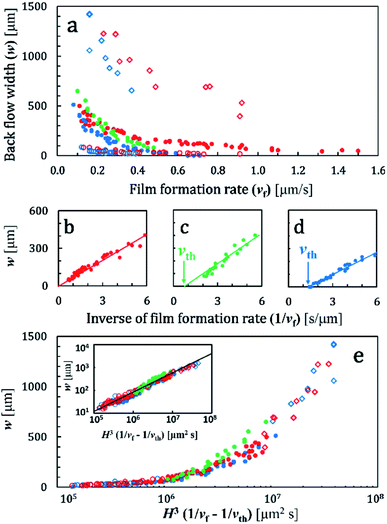 Open Access Article
Open Access ArticleCreative Commons Attribution 3.0 Unported Licence
Correction: Drying-induced back flow of colloidal suspensions confined in thin unidirectional drying cells
Kai Inouea and
Susumu Inasawa*ab
aGraduate School of Bio-Applications and Systems Engineering, Tokyo University of Agriculture and Technology, 2-24-16 Nakacho, Koganei, Tokyo 184-8588, Japan. E-mail: inasawa@cc.tuat.ac.jp; Fax: +81-42-388-7798; Tel: +81-42-388-7105
bDepartment of Chemical Engineering, Tokyo University of Agriculture and Technology, 2-24-16 Nakacho, Koganei, Tokyo 184-8588, Japan
First published on 13th June 2022
Abstract
Correction for ‘Drying-induced back flow of colloidal suspensions confined in thin unidirectional drying cells’ by Kai Inoue et al., RSC Adv., 2020, 10, 15763–15768, https://doi.org/10.1039/D0RA02837A.
The authors regret that an incorrect version of Fig. 3 was included in the original article. The transverse axes in Fig. 3e and its inset were incorrectly displayed. The correct version of Fig. 3 is presented below. The correction does not change any description, results or conclusions in the original article.
The Royal Society of Chemistry apologises for these errors and any consequent inconvenience to authors and readers.
| This journal is © The Royal Society of Chemistry 2022 |

